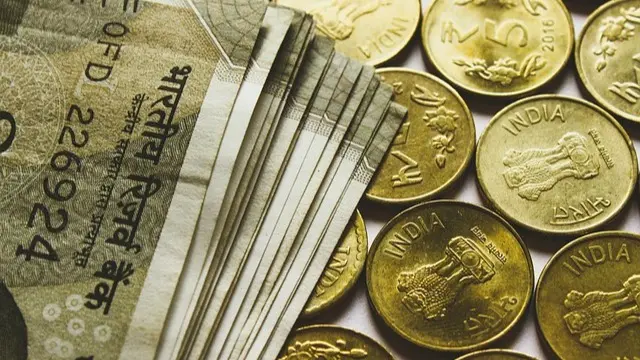Updated 23 July 2024 at 19:04 IST
₹: How It's Earned, Where It's Spent | Understanding Govt Cash Inflow & Expenditure
Sitharaman announced that the government will aim to reach a deficit below 4.5 per cent next year.
- India News
- 2 min read

New Delhi: While presenting Union Budget 2024-25, Finance Minister Nirmala Sitharaman informed that for the year 2024-25, the total receipts other than borrowings and the total expenditure are estimated at ₹32.07 lakh crore and ₹48.21 lakh crore respectively. The net tax receipts are estimated at ₹25.83 lakh crore and the fiscal deficit is estimated at 4.9 per cent of GDP. She said, the gross and net market borrowings through dated securities during 2024-25 are estimated at ₹14.01 lakh crore and ₹11.63 lakh crore respectively. Sitharaman stressed that the fiscal consolidation path announced by her in 2021 has served the economy very well, and the government will aim to reach a deficit below 4.5 per cent next year.
Sources of Government Income
The government’s revenue streams are as follows:
- Income Tax: 19%
- Union Excise Duties: 5%
- GST and Other Taxes: 18%
- Corporation Tax: 17%
- Customs Duties: 4%
- Non-Debt Capital Receipts: 1%
- Non-Tax Receipts: 9
- Borrowing and Other Liabilities: 27%

Government Expenditure
The government's expenditure allocations include:
- Pensions: 4%
- Other Expenditure: 9%
- Finance Commission and Other Transfers: 9%
- States' Share of Taxes and Duties: 21%
- Defence: 8%
- Subsidies: 6%
- Central Sector Schemes (excluding capital outlay on defence and subsidy): 16%

Finance Minister Nirmala Sitharaman noted that the fiscal consolidation strategy introduced in 2021 has significantly benefited India's economy.
Advertisement
Union Budget Key Highlights
Boost to Entrepreneurship and Start-Ups:
- Angel tax abolished for all investor classes.
- Simplified tax regime proposed for foreign shipping companies operating domestic cruises, aiming to enhance cruise tourism potential.
- Foreign mining companies selling raw diamonds in India can benefit from safe harbor rates, supporting the diamond industry.
- Corporate tax rate for foreign companies reduced from 40% to 35% to attract foreign capital.

Direct Tax Regime Simplifications:
Advertisement
- Two tax exemption regimes for charities merged into one.
- TDS rates simplified: 5% TDS on many payments reduced to 2%, and 20% TDS on mutual fund unit repurchases withdrawn.
- TDS rate on e-commerce operators reduced from 1% to 0.1%.
- Credit of TCS (Tax Collected at Source) now applicable to TDS deducted from salaries.
- Delay in TDS payment decriminalized if filed by the due date; new SOPs for rationalized TDS compounding guidelines.
Capital Gains Tax Changes:
- Short-term capital gains now taxed at 20% on certain financial assets.
- Long-term capital gains on all assets taxed at 12.5%.
- Exemption limit for capital gains increased to ₹1.25 lakh per year for lower and middle-income groups.
- Assets classified as long-term: Listed financial assets held over one year; unlisted financial and non-financial assets held over two years.
- Unlisted bonds, debentures, debt mutual funds, and market-linked debentures remain subject to applicable capital gains tax.
Published By : Surabhi Shaurya
Published On: 23 July 2024 at 18:47 IST
